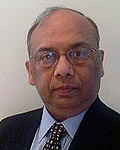History of SiC Power Devices and a Vision for the Future
Category
Published on
Abstract
Wide Band Gap (WBG) semiconductor devices have undergone substantial development activities over the last 25 years. These efforts have benefited from significant infusions of government funding (~$1 B). As a result, select devices have been commercialized and WBG semiconductors are now poised for tremendous market growth over the next 25 years. It is anticipated that WBG semiconductors will replace silicon in applications with ratings from 400 V to 15 kV while enabling the creation of new opportunities with devices up to 40 kV. Commercialization of these high voltage devices has the potential to revolutionize future power systems with the wide-scale integration of renewable energy in the grid.
We will discuss technical issues that have been solved to date and new problems that will need to be addressed to enable the further adoption of WBG devices. Specifically, we will focus on the technical challenges associated with the development of 10-40 kV SiC Insulated Gate Bipolar Transistors (IGBTs).
Additionally, the role of students and universities in the expansion of WBG technologies, funding mechanisms and opportunities, collaborations with industrial partnerships and leveraging university cleanroom facilities will be covered. In this context, we will briefly discuss the four programs which I helped create and manage at US Department of Energy: (1) PowerAmerica ($70 M), (2) Next Generation of Electric Machines (I and II ~ $50 M) and Graduate Traineeships in Power Electronics ($6 M). The courses I plan to teach will focus on both fundamental and practical aspects of WBG technology to prepare students for this revolution, in the skills they will need to acquire to be successful in industry.
Bio
 Dr. Agarwal joined the US Department of Energy (DOE) in March 2013, retiring in November 2016. While at DOE, Dr. Agarwal helped create and manage four programs related to wide band- gap technology and their applications including PowerAmerica, Next Generation of Electric Machines (I and II) and Graduate Traineeships. From 1999 to 2013, Dr. Agarwal was Director of Research and Development for Wide Band Gap (WBG) devices at Cree, Inc. In this role, he oversaw the development and commercialization of Silicon Carbide diode and MOSFET power devices. Today, these WBG semiconductors are being employed globally to improve efficiency and reduce power consumption in systems such as power supplies, solar inverters, and motor drives. Previously, Dr. Agarwal was a Fellow at Northrop Grumman Science and Technology Center, Pittsburgh (1990-1999). While at Northrop Grumman he led research activities on radio frequency Silicon and Silicon-Germanium transistors. He was also instrumental in solving a large number of fundamental issues relating to WBG technologies.
Dr. Agarwal joined the US Department of Energy (DOE) in March 2013, retiring in November 2016. While at DOE, Dr. Agarwal helped create and manage four programs related to wide band- gap technology and their applications including PowerAmerica, Next Generation of Electric Machines (I and II) and Graduate Traineeships. From 1999 to 2013, Dr. Agarwal was Director of Research and Development for Wide Band Gap (WBG) devices at Cree, Inc. In this role, he oversaw the development and commercialization of Silicon Carbide diode and MOSFET power devices. Today, these WBG semiconductors are being employed globally to improve efficiency and reduce power consumption in systems such as power supplies, solar inverters, and motor drives. Previously, Dr. Agarwal was a Fellow at Northrop Grumman Science and Technology Center, Pittsburgh (1990-1999). While at Northrop Grumman he led research activities on radio frequency Silicon and Silicon-Germanium transistors. He was also instrumental in solving a large number of fundamental issues relating to WBG technologies.
Prior to joining Northrop Grumman, Dr. Agarwal held various teaching and research positions (1984-1990) including Associate Professor in Allahabad, India and Member of the Technical Staff at AT&T Bell Laboratories, Murray Hill, NJ. While at Bell Labs he was involved in the development of Gallium-Arsenide digital circuits for fiber-optic communications. Dr. Agarwal received his PhD degree in Electrical Engineering from Lehigh University, Pa in 1984; Masters degree in Electrical Engineering from University of Tennessee Space Institute (UTSI) in 1980; and Bachelor of Science in Electrical Engineering from MNR Engineering College, University of Allahabad, India in 1978. He jointly holds more than 60 patents, has co-authored more than 300 research papers, co-edited a book on Silicon Carbide Technology, co-authored five book chapters and was elected an IEEE Fellow in January 2012 for his life time contributions to Wide Band Gap technologies. As a leading research scientist in this area, Dr. Agarwal’s life goal has been to successfully commercialize WBG power devices to resurrect the domestic power electronics industry while educating the next generation of researchers. This will ultimately enable the creation of high quality manufacturing jobs in the US while perpetuating a high-tech US workforce.
Sponsored by
Cite this work
Researchers should cite this work as follows:
Time
Location
EE 317, Purdue University, West Lafayette, IN